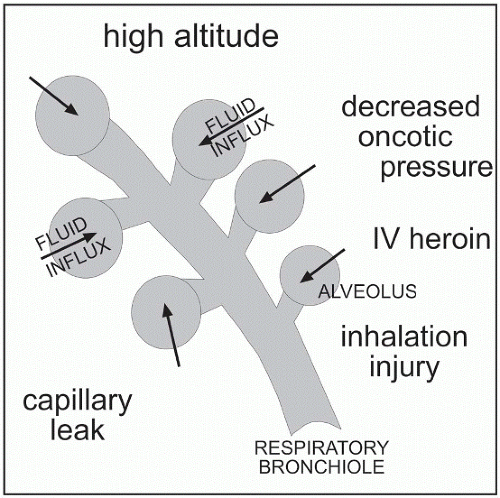Noncardiogenic Pulmonary Edema
QUICK LOOK AT THE CHAPTER AHEAD
The source for pulmonary edema is frequently a failing cardiac system. Pulmonary edema, however, can result from numerous causes affecting the lung. Situations involving alveolar damage such as septicemia, inhalation injuries with smoke or poisonous gases, or aspiration of toxic fluids can cause increased capillary permeability in the lung bed. Drug-induced injury from chemotherapeutic agents, heroin, and inhalants can also be the source of pulmonary edema. Other situations involving high altitude, head injury, lymphatic obstruction associated with malignant processes, or decreased colloidal osmotic pressure associated with liver or other wasting diseases can all be considered causes of noncardiogenic pulmonary edema (Figure 45-1).
The primary function of the pulmonary circulation is to facilitate gas exchange. The pulmonary circulatory system has low resistance and low pressure. In comparison with the systemic circulation with an arterial mean pressure of 90 mm Hg, the mean pressure of the pulmonary artery is 15 mm Hg. This low pressure allows for greater increases in pulmonary blood flow during exercise and for the workload of the right ventricle to be less than that of the left ventricle.
Stay updated, free articles. Join our Telegram channel

Full access? Get Clinical Tree



